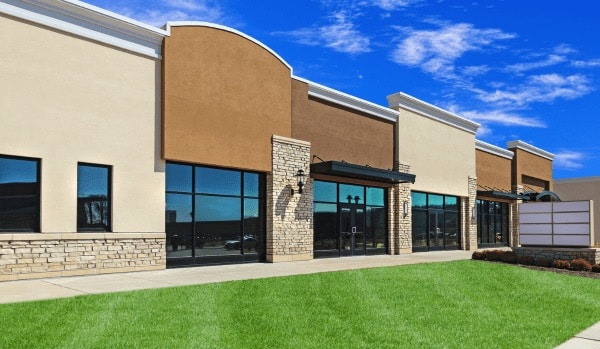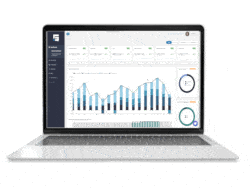Cost segregation is a critical financial tool for commercial property owners and investors. Its ability to increase your tax deductions each year can greatly improve your cash flow. Taking depreciation deductions from cost segregation is one reason why real estate is a good investment choice. However, despite the opportunity for savings it offers, many commercial real estate businesses underuse cost segregation studies.
Here, we’ll break down how cost segregation works, the major benefits, and how you can leverage it to make the most of your tax deductions.
What is Cost Segregation?
A cost segregation study is the process of analyzing a property to decide if any parts of it qualify for accelerated depreciation. Depreciation, the normal wear and tear on a building, offers owners a tax deduction each year for a 39-year period. However, some parts of a property, like parking lots, lighting, flooring, and furniture can depreciate much faster.
Running a cost segregation study allows you to take deductions on these assets, too, offering major tax benefits in the first few years. Short-term depreciations usually occur in 5, 7, or 15 year periods.
During a cost segregation study, a team of expert accountants and engineers assess every aspect of your property or portfolio. They will collect key financial documents such as purchase records, appraisals, and more. The process also involves a site visit to determine the condition of your possessions. Ultimately, you will receive a detailed report explaining what additional depreciation benefits you can take.
Major Benefits
It’s important to understand cost segregation studies as national laws surrounding depreciation change. In 2025, we are in the process of phasing out bonus depreciation. This benefit allows owners and investors to take large percentages of their deductions in the first year of owning assets. While bonus depreciation may end completely or be renewed by legislators, cost segregation studies remain vital.
Cash Flow Flexibility
When you run a cost segregation study soon after buying a property, you can take deductions starting the first year. Ensuring that you are taking all possible deductions means that you free up cash flow to reinvest in your portfolio, rather than worrying about your tax burden.
Building a Safety Net
In addition to improving cash flow, taking deductions in the present helps protect you against tax rates raising in the future. You will already have a strong cash basis to pay higher rates. Savings now give you the ability to strengthen your business and better handle any issues that may arise.
Estate Planning
Conducting a cost segregation can lower the tax basis for an inherited property. In addition, since capital gains are typically forgiven on inherited property, depreciation savings are permanent. The new owner does not have to worry about that depreciation being recaptured. This is an important process in estate transitions.
Add State Tax Incentives
In addition to federal tax deductions, a cost segregation study can also tell you if you qualify for additional state deductions. This is especially important because not all states have the same rules about depreciation and tax benefits. A study ensures you are well-informed.
A Cost Depreciation Case Study
To better understand how cost segregation works and how much it could save you, let’s take a look at an example:
An investor purchases a $2.5 million commercial office building in early 2025. Without cost segregation, depreciation is straight‐line over 39 years, yielding about $64,100 in deductions the first year.
A detailed cost segregation study identifies $600,000 of property components (like carpeting, partitions, and wiring) that qualify for accelerated depreciation. In 2025, the bonus depreciation rate is 40%, so the owner can immediately deduct:
- 40% of $600k = $240,000 via bonus depreciation
- Standard Modified Accelerated Cost Recovery System (MACRS) depreciation on the remaining 60% of segregated assets over 5–15 years
Additionally, the remaining building basis ($1.9 million) continues straight‐line over 39 years.
Overall, first‑year deductions jump from about $64,100 to about $300,000, greatly increasing upfront cash flow.
With 2025’s lower 40% bonus rate, the immediate depreciation benefit is smaller than in years past. However, cost segregation still delivers substantial early deductions.
Who Should Conduct a Cost Segregation Study?
In general, any commercial property owner will benefit from a cost segregation study, as long as their property (or portfolio) has a basis of over $500,000. This is the financial threshold where a study is usually a good investment. However, some properties and owners may find particularly good benefits from a study. Ideal candidates include:
- Properties you have recently purchased, built, or renovated
- Owners who intend to hold properties long term (at least five years)
- Properties with specialized equipment like kitchens or medical offices
- Owners who have high tax liabilities
When to Conduct Cost Segregation Studies
It’s best to conduct a cost segregation study as soon as possible after purchasing a new property. Early analysis lets you take advantage of as many deductions as possible as soon as possible. Similarly, it’s a good idea to run a new study soon after making any major renovations, since you will likely have new depreciating assets.
You may also want to conduct a cost segregation study after major changes in tax laws.
Finally, if you have owned a property for many years and haven’t conducted a study in a while, you should consider an updated study. A new study can ensure you don’t miss any savings from changes on your property over time. You can even run a “look-back” study, which allows you to claim missed deductions from past years.
Maximize Savings with STRATAFOLIO
When it’s time to run a cost segregation study, it’s crucial to have all your financial details in order. Having this information about your assets on hand helps accounting experts make a more accurate analysis. The better the analysis, the better your savings.
To keep track of everything, consider STRATAFOLIO commercial property management software. Two-way integration with QuickBooks Desktop and Online means that all your information is always accessible. Plus, the platform is designed for commercial real estate businesses, helping you stay organized and informed about your whole portfolio.
To learn more about how STRATAFOLIO can help you navigate cost segregation, schedule a demo today.




